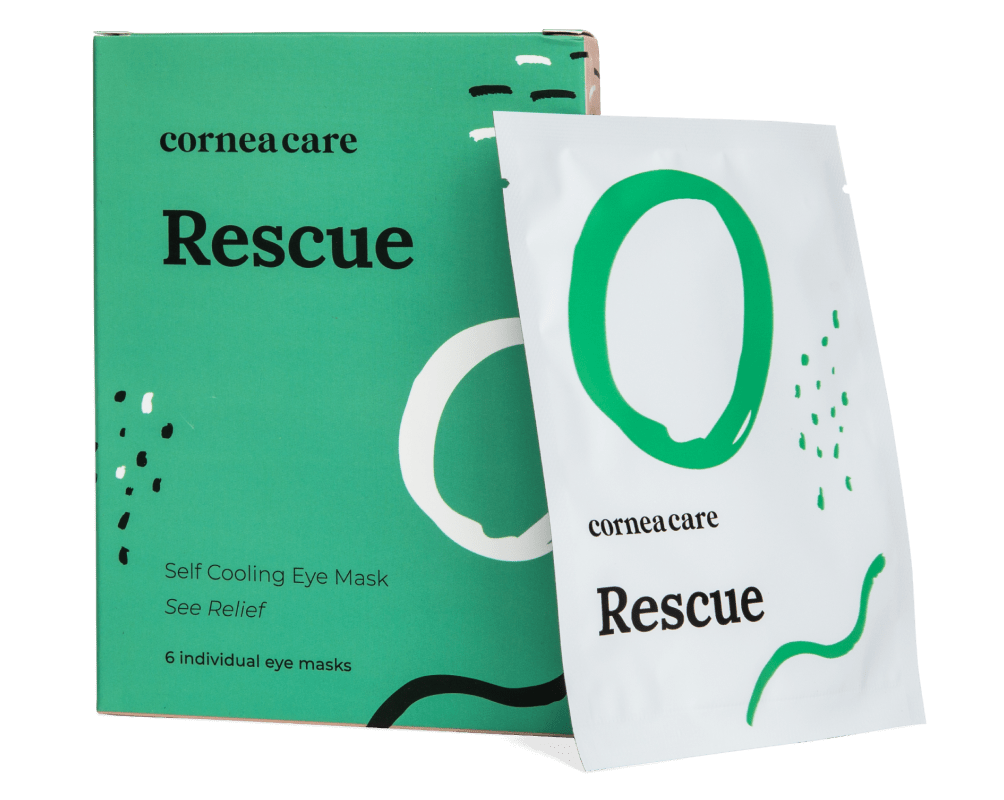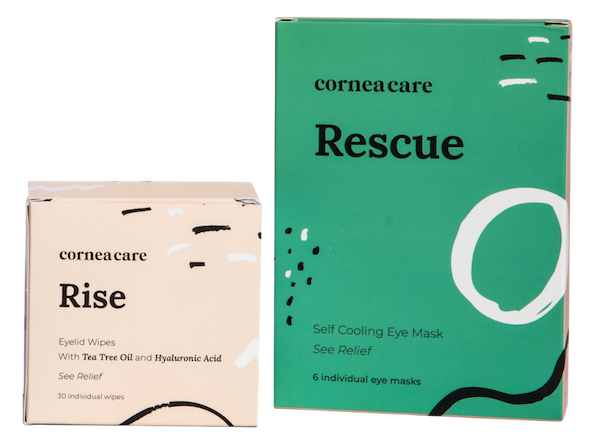So can you really get pink eye from a fart?
Pink eye, or conjunctivitis, is a common and often uncomfortable condition characterized by inflammation of the conjunctiva, the thin membrane covering the white part of the eye. While it’s typically caused by bacteria, viruses, allergens, or irritants, there’s a long-standing urban legend that suggests a rather unconventional culprit: flatulence.
Yes, you read that right. Farting — the natural, albeit sometimes embarrassing, bodily function — has been implicated in the spread of pink eye. But is there any truth to this claim, or is it merely a humorous myth passed down through generations?
Let’s take a closer look at the science behind this eyebrow-raising notion to determine whether there’s any merit to the idea that passing gas could lead to a case of conjunctivitis and uncover the answer to the burning question: Can you get pink eye from a fart?
Key Points
- Pink eye, also called conjunctivitis, refers to any inflammatory condition of the membrane that lines the eye.
- The most common types of conjunctivitis are viral, bacterial and allergic.
- The treatment for pink eye depends on the cause but may include topical eye drops, warm or cold compresses, artificial tears, and good hygiene.
What is Pink Eye?
Pink eye is redness of the sclera, the white part of the eye.1 Conjunctivitis refers to an inflammatory condition of the membrane that lines the eyelids and covers the exposed surface of the sclera. An eye doctor can diagnose the type of pink eye based on your patient history, symptoms, and an eye exam.
According to the Cleveland Clinic, there are an estimated 6 million cases of pink eye each year.2
What are Common Causes of Pink Eye?
The three most common causes of pink eye are allergens, viruses or bacteria.
Allergic Conjunctivitis
Allergic conjunctivitis is a common disorder that affects up to 40% of the population, often called an allergic reaction. You will often have rhinitis (a “runny nose”) with allergic conjunctivitis. Other symptoms include itching and swelling of the eyes that impact your quality of life.
A general practitioner may under-treat or misdiagnose ocular allergies. Itching and blurry vision are the most common symptoms of ocular allergy and they often occur simultaneously with nasal symptoms.3
Only 10% of patients see a doctor for ocular allergies because they manage symptoms themselves with over-the-counter therapies. Allergic conjunctivitis can be seasonal or perennial based on the presence of the allergen. Perennial allergens are often dust mites or animal dander.

Rise
Eyelid Wipes
Perfect for eye dryness, itching, burning, and crusting/flaking of eyelashes. Free shipping 📦
Try today - $25
Viral Conjunctivitis
Viral conjunctivitis is the most common infectious cause of pink eye. The symptoms may vary and are likely to resolve on their own without treatment.3 The most common symptoms are watery mucus discharge and bumps on the underside of your eyelid. Patients with viral conjunctivitis often have a history of recent illness.
- Common Cold
The common cold can cause viral conjunctivitis. In this case, it’s likely you would also have symptoms including runny nose, sore throat or cough. - Coronavirus
Patients with a SARS-CoV2 infection can present with viral conjunctivitis because coronaviruses present in tears according to the CDC.4 - Herpes
Herpes simplex virus type 1 is the cause of the herpes simplex ocular virus and cold sores. Typically, herpes simplex affects one eye upon virus reactivation. HSV can cause scarring of the cornea leading to vision loss if not treated.5
Bacterial Conjunctivitis
Bacterial conjunctivitis is the second most common cause of infectious conjunctivitis but most cases resolve in 1 to 2 weeks. Waking up with eyelash mattering and sticky eyelids without itching are typical symptoms.3 The discharge tends to be more green/yellow color when compared to the watery discharge present with viral conjunctivitis.
Finally, gonorrhea, a type of sexually transmitted disease, is estimated to affect 86.9 million adults.6 Pink eye due to gonorrhea is more common in a newborn exposed during delivery, but adults can also get bacterial conjunctivitis due to contact with the infected fluids.
Our Community
Chat, share, and learn from our doctors, coaches and others like yourself
👩⚕️ Get answers!

Dry Eye
Dry eye has similar symptoms and is often misdiagnosed as pink eye. Its prevalence around the world varies from 5% to 34%.7 A trained eye care provider performs a slit lamp exam to differentiate dry eye from conjunctivitis.
Symptoms of Pink Eye
Symptoms vary by the type of pink eye but may include:
- Blurry vision
- Mattering
- Watery eyes
- Pink or red color of the white part of the eye (sclera)
- Swelling of the conjunctiva, which lines the sclera
- Irritation or burning
Can You Get Pink Eye from a Fart?
Pink eye is the result of a virus, bacteria or an allergic reaction. While, flatulence, commonly called “farting” is passing gas from the digestive system from the body. Farting is a normal biological process when food is digested resulting in a buildup of gas.
There’s no relationship between expelled gas and conjunctivitis. So no, you can’t get pink eye from a fart.8
However, viruses and bacteria can be very contagious. Pink eye infections can spread from person to person in different ways. Germs are spread through close contact like touching or shaking hands, through air by coughing and sneezing, or by touching an object or surface with germs on it and then touching your eyes prior to washing your hands. Take the time to wash your hands regularly to avoid being infected.9

Rescue
Cold Compresses
Perfect for sudden flare-ups of eye dryness, pain, burning, and swollen/inflamed eyelids. Free shipping 📦.
Try today - $12
Conjunctivitis Treatment
The treatment for conjunctivitis depends on the cause. Generally, doctors recommend you wash your pillowcases, practice good hygiene like hand washing, and discontinue your contact lenses during treatment.
Allergic Conjunctivitis
Allergic conjunctivitis treatment typically begins with avoiding the allergen, and using cool compresses and artificial tears. Topical antihistamines eye drops like Pataday or Lastacaft are used to treat chronic symptoms. Some providers will recommend additional therapies like decongestants, mast cell stabilizers, or nonsteroidal anti-inflammatory drugs (NSAIDS).2
Your doctor may also order an allergy test to determine the underlying cause of your symptoms.2
Bacterial Conjunctivitis
Treating bacterial conjunctivitis with a topical antibiotic will reduce symptoms. This may allow an earlier return to school or work. In cases of conjunctivitis related to sexually transmitted diseases such as gonorrhea, additional treatment is required along with a topical antibiotic.3
Viral Conjunctivitis
Artificial tears will soothe an eye with a viral infection. A cool washcloth or a CorneaCare Self-Cooling Cold Compress can improve the look and feel of your eyes. CorneaCare Eyelid Wipes can remove any debris and mucus on the eyelashes.

Starter
Eyelid Hygiene Plan 1
Perfect for eye dryness, burning, itching, pain, crusting/flaking of eyelashes and inflamed eyelids. Free shipping 📦.
Try today - $35
Can You Get Pink Eye from a Fart FAQ
Viral infections are the primary culprits behind the majority of pink eye cases. These viruses are highly contagious and easily spread through direct contact with infected individuals or surfaces contaminated with the virus. While viral conjunctivitis is the most common form, bacterial and allergic conjunctivitis can also contribute to cases of pink eye.
Pink eye can result from exposure to bacteria or viruses present in fecal matter. The most common bacterial culprits are strains of Staphylococcus aureus and Streptococcus pneumoniae. Poor hygiene practices, such as not washing hands properly after using the bathroom, can cause the transfer of these pathogens to your eyes, leading to pink eye.
Pink eye can develop suddenly and seemingly overnight due to the rapid spread of infection. For instance, if you have contact with someone who has pink eye or with surfaces contaminated by their eye secretions, you may transfer the virus or bacteria to your own eyes. Additionally, certain environmental factors or allergens can trigger pink eye symptoms, leading to a seemingly abrupt onset of the condition.
Putting It All Together
So, can you get pink eye from a fart? No, it’s really not how pink eye spreads. It makes for a funny mental image, but there’s just no solid science backing the idea that a rogue fart can shoot bacteria into your eye from across the room.
The real culprits are much less dramatic — like rubbing your eyes with germy hands or sharing towels with someone who’s already infected. So if you want to keep your eyes clear and healthy, stick to the basics: wash your hands often, don’t touch your face too much, and maybe keep some personal space when someone’s coughing or sneezing nearby.
What’s Next
Learn the truth about pink eye! Check out these articles next:




